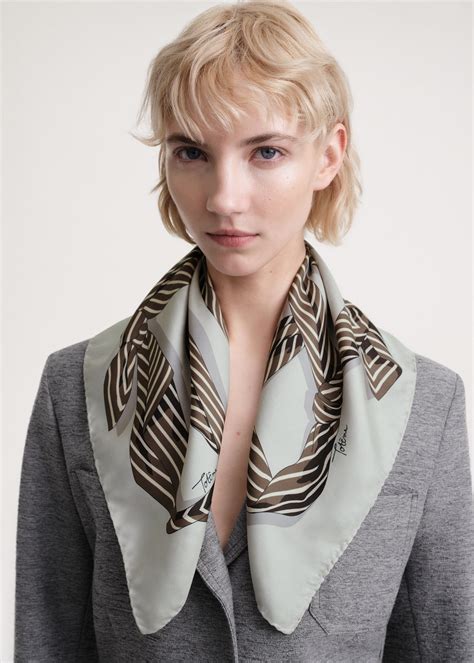Introduction

Scarves and turbans are versatile accessories that can transform any outfit, adding a touch of style, warmth, or spirituality. With their countless ways to wear, these fashionable pieces are essential for any wardrobe.
Types of Scarves & Turbans
Scarves:
- Infinity scarves: Long, circular scarves that can be worn looped around the neck or draped over the shoulders.
- Pashminas: Soft, luxurious scarves made from cashmere or wool.
- Silk scarves: Elegant and versatile scarves known for their luxurious feel and vibrant colors.
- Cotton scarves: Lightweight and breathable scarves, perfect for summer or layering.
Turbans:
- Pre-tied turbans: Convenient turbans that come ready to wear, offering instant style without the need for knotting.
- DIY turbans: Turbans that can be created using a variety of fabrics and techniques, allowing for endless customization.
- Traditional turbans: Cultural and religious head coverings worn in various parts of the world.
Benefits of Scarves & Turbans
Scarves:
- Enhance style: Instantly elevate any outfit with a splash of color or pattern.
- Provide warmth: Protect against the cold, especially during autumn and winter months.
- Conceal imperfections: Hide flaws or unwanted areas on the face or body.
- Add versatility: Can be worn in multiple ways for a variety of looks.
Turbans:
- Enhance spirituality: Often associated with religious and cultural traditions.
- Provide coverage: Shield the head from sun damage or exposure.
- Manage hair: Keep hair in place, particularly for those with long or voluminous hair.
- Improve confidence: Create a bold and unique style statement.
How to Wear Scarves & Turbans
Scarves:
- Draped over the shoulders: For a casual, effortless look.
- Knotted around the neck: Simple and classic, adding a touch of style.
- Looped around the head: Keeps ears warm while adding a stylish touch.
- As a belt: Accessorize a dress or tunic.
- As a headband: Create a bohemian or retro vibe.
Turbans:
- Pre-tied: Slip on easily for a polished look.
- DIY: Use a rectangular piece of fabric and experiment with different tying techniques.
- Traditional: Follow cultural or religious guidelines for wrapping.
- With hair accessories: Add embellishments like beads, sequins, or pins for extra flair.
Creative Applications of Scarves & Turbans
Beyond their traditional uses, scarves and turbans can also be repurposed for unique and creative applications:
- Pillowcases: Create cozy and stylish pillowcases by sewing together a soft scarf.
- Table runners: Add a touch of elegance to your dining table with a long, flowing scarf as a runner.
- Drapery: Use sheer scarves as curtains for a bohemian or romantic effect.
- Wall art: Frame a colorful scarf as a unique and affordable piece of wall art.
- Jewelry: Fold a scarf into various shapes to create necklaces, bracelets, or earrings.
Market Statistics
The global scarves and turbans market is expected to grow significantly in the coming years, with the following statistics:
| Year | Projected Market Value |
|---|---|
| 2023 | $20 billion |
| 2028 | $28 billion |
| Projected Growth Rate: 5% CAGR |
Customer Engagement
- How do you typically style your scarves and turbans?
- What are your favorite materials and colors?
- What other creative ways have you found to use scarves and turbans?
Effective Strategies for Styling Scarves & Turbans
- Consider your face shape: Choose scarves and turbans that flatter your facial features.
- Experiment with different fabrics: Explore a variety of textures, from soft silks to cozy wools.
- Accessorize: Enhance your look with jewelry, hats, or sunglasses.
- Pay attention to the occasion: Choose scarves and turbans that fit the event or setting.
- Get creative: Don’t be afraid to try different tying styles and experiment with unconventional ways to use scarves and turbans.
Step-by-Step Guide to Tying a Simple Turban
- Fold a rectangular piece of fabric in half diagonally.
- Place the center point of the fabric on the back of your head.
- Bring both ends of the fabric forward and cross them.
- Wrap one end around the head and tie it behind the neck.
- Fold the remaining end back and tuck it into the knot.
- Adjust the turban as needed for comfort and style.
Conclusion
Scarves and turbans are versatile accessories that offer endless possibilities for style, warmth, and cultural expression. By embracing their versatility and experimenting with different fabrics, colors, and tying techniques, you can create unique and eye-catching looks that elevate any outfit.
